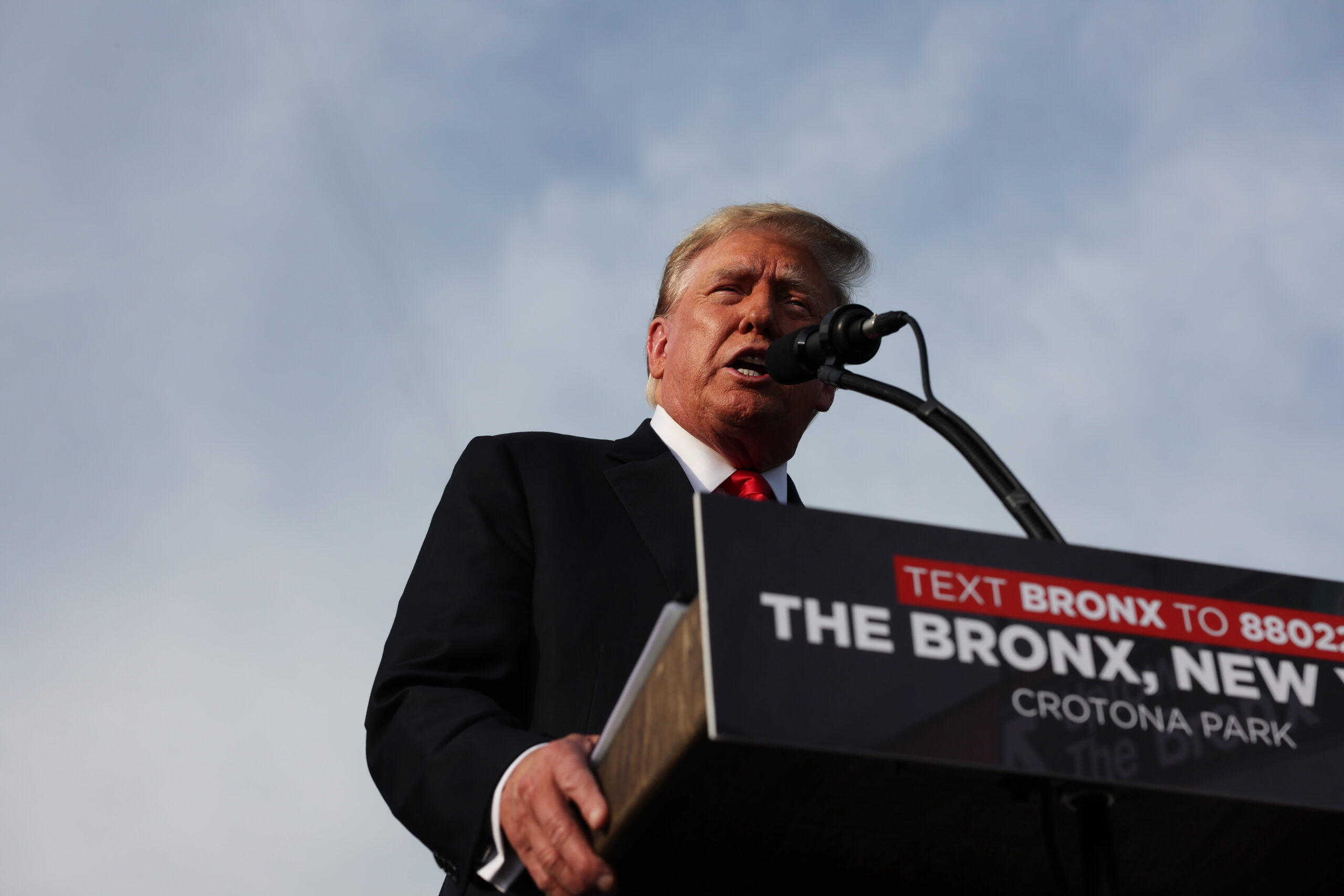
This article was originally published on American Conservative. You can read the original article HERE

“Let us in! Let us in!” the crowd chanted, fists in the air, as the police looked on. Two hours earlier I had arrived at the site of Donald Trump’s rally in the Bronx, getting in line behind thousands of other people. Now I was just outside the gate. The once orderly line turned into something more like a crowd, and everyone was pressed forward. Incredibly, only two metal detectors seemed to be in working order, and the police had resorted to pat-downs to speed things up. Lee Greenwood’s “God Bless the USA”—Trump’s walkout music—was playing inside the venue, but I wouldn’t make it in for another 30 minutes. “It’s easier to cross the border,” someone joked. One lady blamed the delays on interference from antifa. Off to the right was a VIP entrance, which members of the media and MAGA personages were passing through.
Standing in that crowd—black, white, and every shade in between—I found it hard not to laugh at the countless articles denouncing Trump as the candidate of white supremacy. There were girls in cowboy hats and crop tops, guys with neck tattoos and Trump chains. Young orthodox Jews rubbed shoulders with old church ladies.
Yes, the crowd was diverse. But that word has at least two meanings. It can be used to describe people from a broad range of races and social backgrounds. Or it can evoke a particular type of politics, one that prides itself on non-conformity, rejecting “whiteness,” heterosexuality, and the flag of one’s own country. All left-wing protests are diverse in the second sense, even when they are overwhelmingly white. This crowd was different. There were kippahs and African print dresses, vulgar t-shirts and t-shirts with Bible verses. But there was an almost universal gender conformity. No one wore masks. Judging by how many were waving it, this crowd identified with, not against, the American flag.
Analysts sometimes make the mistake of suggesting that Trump’s base is united by nihilism or mere opposition to wokeness. It’s seen as an incoherent rump, with nothing in common but distaste for progressive orthodoxies. It’s true that Trump’s base lacks the demographic homogeneity of the 1990s GOP, but it subscribes to a vision that is no less coherent than that of the Democratic Party.
These voters may not go to church or abide by the commandments of any book, but many still claim a religious identity and express sympathy for others’ expressions of faith. As the sociologist Ryan Burge has found, 1 out of 5 Republicans who believe in “nothing in particular” nonetheless describe themselves as evangelical. This is a particularly vivid expression of the way in which people on the right who aren’t particularly devout nonetheless regard religion as part of their identity. Their patriotism is even more pronounced. A Gallup poll from June 2023 found 60 percent of Republicans expressing extreme pride in being an American compared to 29 percent of Democrats.
Sometimes the Republican Party is described as working-class. That’s inaccurate if it is meant to suggest that all Republicans are wage-earners. Many in fact are small businessmen. But it’s accurate in the sense that the Republican Party contains very few “symbolic capitalists,” to borrow a term from the sociologist Musa al-Gharbi. Symbolic capitalists are people who possess high levels of cultural or symbolic capital and profit from its reproduction; they work in academia and philanthropies, law firms and little magazines.
Subscribe Today
Get daily emails in your inbox
No, most of the people at Trump’s rally worked with their hands or ran businesses in the non-symbolic economy. Trump seemed to intuit this and spent an inordinate amount of time talking about construction projects he’d been involved in—the Wollman Rink in Central Park, the border wall. He launched into long excurses on copper tubing and concrete planks. He dilated on the type of work that needed to be done to fix the subway system. The crowd ate it up.
Most of the news coverage of that day focused on the fact that Trump had brought out two local rappers—both of whom face criminal charges—to endorse him at the rally’s end. It was an important moment, the clearest sign yet that Trump has embraced the mythology of the outlaw hero, an all-American type that includes Jesse James and Joaquin Murrieta, Huck Finn and the Man With No Name.
But something else about that day stuck with me. Perhaps the loudest chant was “Send them back! Send them back!” There weren’t many Mayflower descendants in the crowd, maybe not that many people whose ancestors fought in the Civil War. But the crowd was eager to see our border closed and those who had arrived illegally removed. Trump agreed: “Nobody wants to send anybody back, but you have no choice. This is not sustainable by any country.” The caveat was striking. Some imitators of Trump seem to think that they can capture his magic by speaking in uncompromising terms. But Trump often offsets his toughest rhetoric with a humanizing touch. It’s another thing that helped him connect with that crowd in the Bronx.
This article was originally published by American Conservative. We only curate news from sources that align with the core values of our intended conservative audience. If you like the news you read here we encourage you to utilize the original sources for even more great news and opinions you can trust!










Comments